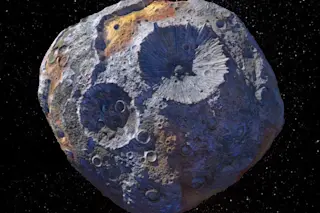What if the key to protecting our planet … was leaving it? Well, in part, at least. As worries about climate change mount, and the race to obtain resources from space heats up, some experts and über-rich CEOs are seriously considering moving our industry off-planet. That means using robots to build satellites and space stations by mining asteroids, the moon and other planets. A plot ripped from science fiction? Most definitely. But much of the technology to build this off-earth infrastructure already exists.
This contingency plan — known as in situ resource utilization — is not only necessary to reduce global warming, but could even be key to our continued growth as a species, according to Phil Metzger, a planetary scientist at the University of Central Florida. Before that, Metzger spent 30 years at NASA where he cofounded Swamp Works, a lab that develops tech for space mining and interplanetary ...














